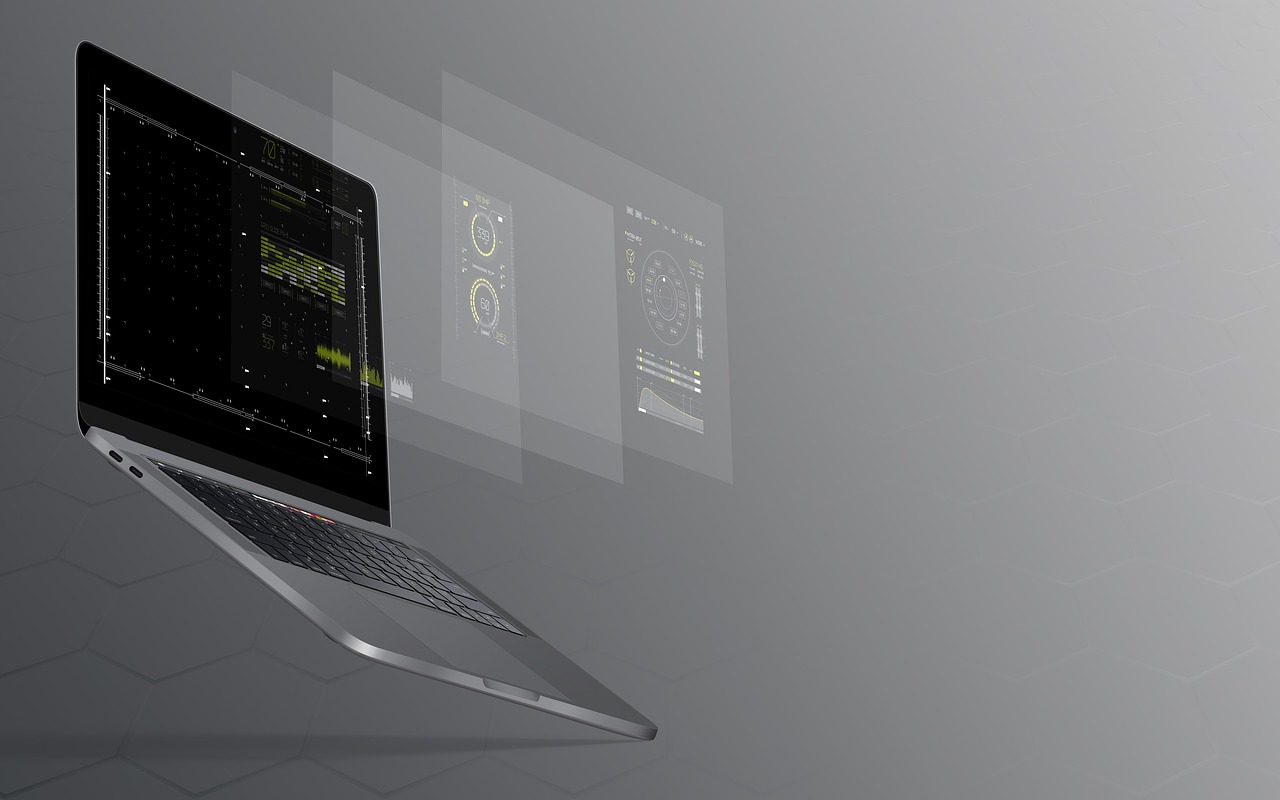If you’re managing IT infrastructure for an educational institution or research facility, you’ve likely felt the pressure of supporting increasingly complex computing needs while working within tight budget constraints. Students and researchers need access to specialized Linux applications for programming, data analysis, and simulation work, but providing this access through traditional methods often means expensive hardware investments and complicated maintenance schedules.
Linux-based virtualization software is a smart solution that addresses these challenges head-on. It offers you flexible access to virtual desktops and applications, dramatically cuts operational costs, and aligns perfectly with the open-source learning philosophy that many institutions embrace.
Inuvika OVD Enterprise delivers these benefits through streamlined deployment, secure access protocols, and efficient centralized management that actually works in real-world academic environments. When your education team needs a virtual desktop solution that excels with Linux environments, this platform combines the technical power you require with the simplified maintenance your IT staff deserves.
Understanding the Value in Educational Computing
Educational environments consistently rely on specialized Linux applications for programming coursework, complex data analysis projects, and sophisticated simulation work. Rather than installing software packages on hundreds of individual computers (with all the licensing, maintenance, and version control headaches that approach creates), you can leverage virtualization solutions that host desktops and applications in a central, manageable location.
This centralized approach means your teachers, researchers, and students can access the Linux tools they need from any device, encouraging collaboration and knowledge sharing without the physical limitations of traditional computer labs. The flexibility is transformative, especially when you consider how learning and research patterns have evolved in recent years.
Inuvika OVD Enterprise excels in this environment by providing comprehensive support for Linux desktops and applications within a framework that gives your academic teams complete control over access while supporting multiple users securely. It’s designed to work seamlessly with open-source software and customizable configurations, freeing you from vendors that might lock your institution into proprietary platforms that don’t align with educational values or budget realities.
Cost Management That Makes Sense for Education
One of the most compelling advantages of Linux virtualization lies in cost management, a critical consideration for educational institutions operating within increasingly constrained budgets. By implementing a solution that embraces open-source Linux environments, your institution can avoid the expensive licensing fees typically associated with commercial operating systems and proprietary software packages.
Inuvika OVD Enterprise integrates seamlessly with existing Linux infrastructure, enabling your staff to run multiple virtual desktop sessions on current hardware investments. This approach significantly reduces the need for new hardware purchases while making it remarkably simple to scale computing capacity during periods of heavy demand, such as intensive research projects or laboratory-focused coursework.
Your institution can even repurpose older machines as client access points since the computational work happens on your central servers. This strategy not only reduces ongoing maintenance costs but also minimizes electronic waste, aligning with sustainability goals while extending the useful life of existing technology investments. The environmental and financial benefits create a compelling case for stakeholders across your institution.
Flexible Management for Academic Environments
Linux virtualization software needs to strike a careful balance between centralized administrative control and the flexibility that academic environments require. Your faculty members often need to customize software configurations or desktop layouts for different courses or research projects, and they frequently need to deploy new computing environments quickly for specialized labs in programming, data science, or engineering disciplines.
OVD Enterprise addresses this need through sophisticated role-based access controls that allow your administrators to assign specific desktop configurations or application suites to different user groups. A statistics course might require access to RStudio and Jupyter notebooks, while an engineering lab needs CAD tools and simulation software. Your system managers can implement updates once on the central server, making changes immediately available to all relevant users without touching individual client computers.
This level of control proves invaluable for education teams who need reliable, consistent computing environments without delays or excessive demands on IT staff time. The ability to rapidly provision new environments or modify existing ones keeps pace with the dynamic nature of academic coursework and research activities.
Secure Access for Hybrid Learning Environments
Education and research activities increasingly happen beyond traditional campus boundaries, particularly as hybrid learning models become standard practice. Providing secure remote access to specialized Linux tools becomes essential, but you need solutions that protect sensitive academic work without requiring students to download files to potentially unsecured personal devices.
Inuvika OVD Enterprise maintains all data and applications on your controlled servers, with users accessing their desktop environments through secure encrypted channels. Advanced security features like two-factor authentication and granular role-based access ensure that academic work remains within your managed systems, eliminating risks associated with device breaches or lost laptops.
This centralized security model gives your faculty and researchers the confidence to focus on teaching and conducting experiments rather than worrying about data security or intellectual property protection. The peace of mind extends to your IT team, who can implement consistent security policies without managing dozens of individual endpoint configurations.
Optimized Resource Utilization
Another significant benefit emerges from improved resource efficiency across your institution. Instead of maintaining separate computer labs for each department (with the associated costs and scheduling complexities), you can run virtual desktop pools on central servers that provide better utilization of computing power and more flexible scheduling options.
This approach means that when a computer lab isn’t being used for scheduled classes, those virtual desktop resources can be allocated to students working on assignments from their dormitories or off-campus locations. You improve access to computing resources without building additional physical infrastructure, maximizing the value of your technology investments.
Inuvika OVD enables this flexible resource sharing through comprehensive management tools that let your IT staff monitor desktop usage, balance computational loads across your network, and respond dynamically to changing demand patterns. The platform supports both Linux and Windows environments, allowing computer labs that serve diverse academic programs to operate within a unified, manageable system.
Simplified Maintenance and Experimentation
Research and learning environments thrive on experimentation, which often means students and researchers need to install new software packages, test experimental code, or explore configurations that might potentially compromise system stability. Traditional desktop management approaches make this kind of experimentation risky and time-consuming to recover from.
Linux virtualization software transforms this challenge by making desktop restoration as simple as ending a user session. Your IT staff can provide fresh, clean environments without lengthy reinstallation processes, encouraging the kind of bold experimentation that drives learning and discovery.
Inuvika OVD Enterprise supports completely sandboxed desktop environments where users can experiment freely, then return to pristine sessions each time they log in. This approach protects overall system integrity while dramatically reducing support calls, giving your IT staff fewer disruptions during busy academic periods when their time is most valuable.
Real-World Success in Academic Settings
Consider a university supporting multiple Linux-intensive programs including computer science, bioinformatics, and robotics research. The institution needed computing environments where students on campus and researchers working remotely could access identical, sophisticated toolsets without the complexity of managing individual installations.
After implementing Inuvika OVD, the university created specialized desktop templates for different academic programs, with relevant compilers, development environments, and research libraries pre-configured for each discipline. Students could access assignments and research tools from any location without needing to install complex software locally, while administrators reported significantly faster update cycles and fewer device-related support issues.
An unexpected benefit emerged in supporting guest lectures and remote workshops. Visiting researchers could participate in advanced laboratory sessions using tablets or personal devices without installing any specialized software. This flexibility led to increased remote engagement, positively impacting both enrollment numbers and student retention rates across technical programs.
Choosing Your Linux Virtualization Solution
When you’re evaluating Linux virtualization options for your institution, focus on solutions that provide comprehensive support for Linux desktops and application streaming, centralized management consoles for handling user images and access controls, and fine-grained permission systems that work with academic organizational structures.
Look for adaptive streaming capabilities that maintain performance across diverse network connections, quick environment reset functionality for experimental work, and seamless integration with your existing infrastructure whether you’re using on-premises servers or cloud resources.
Inuvika OVD Enterprise delivers all these capabilities while providing substantial cost savings compared to legacy platforms. It’s specifically designed for institutions that want to embrace open-source principles while future-proofing their computing infrastructure investments.
Ready to transform how your institution delivers computing resources to students and researchers? Linux virtualization software represents more than just a technology upgrade. It’s a strategic approach that can enhance learning outcomes while reducing operational complexity and costs.
FAQs
Why is Linux virtualization particularly valuable for educational institutions?
Linux virtualization aligns with educational budgets and open-source learning principles while providing access to specialized programming, data analysis, and simulation tools. It eliminates expensive per-seat licensing costs and allows institutions to repurpose older hardware as client access points.
How does centralized management benefit academic IT teams?
Centralized management allows IT staff to update software once on the server with changes immediately available to all users. This approach eliminates the need to update individual computers, reduces maintenance time, and ensures consistent computing environments across different courses and research projects.
Can students access Linux desktops securely from personal devices?
Yes, students can access secure Linux desktop environments from any device including personal laptops, tablets, and smartphones. All data and applications remain on institutional servers, eliminating security risks associated with downloading sensitive academic work to personal devices.
How does Linux virtualization support experimental learning and research?
Virtualized environments provide sandboxed desktops where students and researchers can experiment freely without risking system stability. Sessions can be reset instantly to provide fresh environments, encouraging bold experimentation while protecting overall infrastructure integrity.
What kind of cost savings can educational institutions expect?
Institutions typically see significant reductions in software licensing costs, hardware requirements, and IT maintenance overhead. The ability to repurpose older machines as client devices and eliminate per-seat licensing for specialized software creates substantial budget savings.
How does this approach support hybrid and remote learning?
Linux virtualization enables consistent access to specialized computing tools regardless of student location. Remote learners get the same desktop environments and software access as on-campus students, supporting flexible learning models without compromising educational quality.

